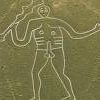26.2.2009 | 17:15
Hvers er ađ dćma?
Ekki skal ég dćma hversu vel eđa illa téđur Milutinovic er ađ dómnum kominn. Og vera kann ađ nauđsynlegt sé ađ halda úti dómstól sem ţessum. En hvers er ađ dćma?
Ég velti ţví oft fyrir mér ţegar ég les fréttir af stríđsglćpadómstólnum hver velji í dóminn og hver sé ađ dćma hvern?
Líti mađur yfir dómaralistann sést ađ međal 28 dómara er t.d. einn Kínverji (Torg hins himneska friđar), einn Bandaríkjamađur (Guantanamóflói) og einn Breti (Birmingham 6). Fleiri ţjóđa menn mćtti einnig telja hverra ríkisstjórnir hafa gerst sekar um mannréttindabrot og einnig hafa ofangreindar ţjóđir gerst sekar um fleiri brot en hér er taliđ. Hér eru ađeins tínd til dćmi en ekki veriđ ađ telja upp.
Ég spyr ţví enn og aftur: Hvers er ađ dćma?

|
Sýknađur af stríđsglćpaákćru |
| Tilkynna um óviđeigandi tengingu viđ frétt | |
Um bloggiđ
Emil Örn Kristjánsson
Fćrsluflokkar
Bloggvinir
-
 altice
altice
-
 athena
athena
-
 bassinn
bassinn
-
 benediktae
benediktae
-
 bjarnimax
bjarnimax
-
 carlgranz
carlgranz
-
 ea
ea
-
 fhg
fhg
-
 fullvalda
fullvalda
-
 gattin
gattin
-
 gauisig
gauisig
-
 gunnargunn
gunnargunn
-
 h2o
h2o
-
 heimssyn
heimssyn
-
 helgi-sigmunds
helgi-sigmunds
-
 himmalingur
himmalingur
-
 hlynurs
hlynurs
-
 holmarinn
holmarinn
-
 hordurhalldorsson
hordurhalldorsson
-
 hrenni
hrenni
-
 iceberg
iceberg
-
 jaherna
jaherna
-
 jakobk
jakobk
-
 jonhalldor
jonhalldor
-
 jonlindal
jonlindal
-
 jonvalurjensson
jonvalurjensson
-
 jorunnfrimannsdottir
jorunnfrimannsdottir
-
 kje
kje
-
 krist
krist
-
 kristinm
kristinm
-
 kruttina
kruttina
-
 ksh
ksh
-
 lifsrettur
lifsrettur
-
 minos
minos
-
 nr123minskodun
nr123minskodun
-
 rabbabara
rabbabara
-
 rocksock
rocksock
-
 runirokk
runirokk
-
 rynir
rynir
-
 saemi7
saemi7
-
 samstada-thjodar
samstada-thjodar
-
 shv
shv
-
 skjalfandi
skjalfandi
-
 sumri
sumri
-
 texi
texi
-
 tharfagreinir
tharfagreinir
-
 theodor
theodor
-
 thjodarheidur
thjodarheidur
-
 tibsen
tibsen
-
 tilveran-i-esb
tilveran-i-esb
-
 tomasha
tomasha
-
 valdimarjohannesson
valdimarjohannesson
-
 vig
vig
-
 zeriaph
zeriaph
-
 zumann
zumann
Heimsóknir
Flettingar
- Í dag (28.4.): 4
- Sl. sólarhring: 6
- Sl. viku: 18
- Frá upphafi: 4591
Annađ
- Innlit í dag: 4
- Innlit sl. viku: 18
- Gestir í dag: 4
- IP-tölur í dag: 4
Uppfćrt á 3 mín. fresti.
Skýringar





Athugasemdir
Ţađ hafa margar ţjóđir gerst sekar um stríđsglćpi og telja sig nú fullfćrar ađ dćma ađra fyrir hiđ sama.
Jakob Falur Kristinsson, 26.2.2009 kl. 17:36
Ţetta er bara bull ţađ voru engir stríđglćpir í Serbíu
Alexander Kristófer Gústafsson, 26.2.2009 kl. 18:03
Alexander: Hvađ kemur nćst ? Engar útrýmingarbúđir í tíđ nasista. Eđa er ţetta bara grátt grín hjá ţér.
Finnur Bárđarson, 27.2.2009 kl. 11:13
Ég held ađ Alli sé bara ađ stuđa okkur.
Emil Örn Kristjánsson, 27.2.2009 kl. 12:20
Ţađ er reyndar fariđ međ rangt mál í ţessari frétt ţví ţađ er ekki Stríđsglćpadómstóll SŢ (International Criminal Court) sem fer međ ţetta mál heldur sérstakur stríđsglćpadómstóll v/fyrrum Júgóslavíu. Ţ.e. International Criminal Tribunal for Former Yugoslavia sjá icty.org
Ađalheiđur Ámundadóttir, 27.2.2009 kl. 13:56
Ţađ er rétt hjá ţér, Ađalheiđur. Ég átti líka viđ hann ţegar ég ritađi "stríđsglćpadómstóllinn" og ţessir dómarar, sem ég tíndi til, sitja einmitt í ţeim dómi. Ég sá ekki ástćđu til ađ fara út í ţessa sálma ţví ICTY er á vegum Sameinuđu ţjóđanna. En rétt skal vera rétt.
Emil Örn Kristjánsson, 27.2.2009 kl. 15:09
Ţađ voru útreýmngabúiđir hjá nasistanum jú en ţetta ađ stríđglćpir vour framdir í serbíu gegn múslimum er ţjóđsögn
Alexander Kristófer Gústafsson, 28.2.2009 kl. 14:53
Ég er međ greinar um ţessa svokölluđu stríđglćpi í serbíu á bloggi mínu
Alexander Kristófer Gústafsson, 28.2.2009 kl. 14:54
(Was 'Srebrenica genocide' a hoax?)
Ég geri mér grein fyrir ađ ţessi skođun mín á svokallađri helför gegn múslimum í Serbíu er vćgast sagt umdeild en hérna er góđ grein um ţetta mál tekiđ af worldnetdaily sem hefur gert margar góđar greinar um Serbíu og kosvo máliđ
Was 'Srebrenica genocide' a hoax?
Posted: May 01, 2007
1:00 am Eastern
By Aleksandar Pavic
© 2008
For more than 10 years, the term "Srebrenica" has been used to denote the slaughter of "innocent Muslims" at the hands of Christians – more specifically, the Bosnian Serb army, alleged to have slaughtered, according to the version currently accepted by most major media, "between 7,000 and 8,000 Muslims" when it captured that small town in eastern Bosnia in mid-July 1995. As the story goes, the Bosnian Serbs captured this "U.N.-protected zone" and proceeded to take away and execute thousands of men, women and children in the space of several days, subsequently burying them in mass graves that are still being dug up almost 12 years later.
Belgrade-based historian and researcher, Milivoje Ivanisevic, who has been documenting Yugoslavian civil war casualties for more than a decade, has recently challenged the claims in a new booklet, "The Srebrenica Identity Card," which documents hundreds of bodies buried at the Srebrenica Memorial that were not killed in July 1995, when the alleged genocide took place, including cases of people who died natural deaths a full 13 years before the event took place.
The newest evidence offered by Ivanisevic indicates a number of those buried at the Srebrenica Memorial Complex not only were not killed in July 1995, but actually died much earlier, even in the early 1980s – more than 10 years before the civil war in Yugoslavia even started.
(Column continues below)
adsonar_placementId=1270202;adsonar_pid=663759;adsonar_ps=1451068;adsonar_zw=300;adsonar_zh=250;adsonar_jv="ads.adsonar.com";
According to Ivanisevic, as of March 2007, more than 12 years after the event, a total of 2,442 bodies have been buried at the Memorial. Among those, a total of 914, or over 37 percent, were on the voting lists for the 1996 elections in Bosnia – over a year after the alleged "genocide." The voting lists themselves were approved and checked by the Organization for Security and Cooperation in Europe, which supervised the elections.
A second even more significant find involves the fact that "at least 100 people" buried at the Memorial died of natural causes. Ivanisevic claims that the numbers would be even larger if he'd been allowed access to the death books in Srebrenica and the surrounding towns. Nevertheless, several names with dates of birth, death and place of demise are provided: Fetahija (Nazif) Hasanovic, b. 1955 – d. Dec.15, 1996, Srebrenica; Sukrija (Amil) Smajlovic, b.1946 – d. May 2,1996, Zaluzje; Maho (Suljo) Rizvanovic, b.1953 – d. Jan. 3,1993, Glogova; Mefail (meho) Demirovic, b.1970 – d. May 10, 1992, Krasanovici; Redzic (Ahmet) Asim, b.1949 – d. April 22, 1992, Bratunac.
Thirdly, Ivanisevic charges that several hundred soldiers as well as civilians were transferred to the Srebrenica Memorial from other cemeteries and reburied, with Muslim burial rituals. One of these is the body of Hamed (Hamid) Halilovic (1940-1982), transferred from the nearby cemetery in Kazani, who apparently died a full 13 years before the Srebrenica "genocide." Other bodies transferred from Kazani to the Srebrenica Memorial include those of Osman (Ibro) Halilovic (1912-1989), Nurija (Smajo) Memisevic (1966-1993), Salih (Saban) Alic (1969-1992), Mujo (Hasim) Hadzic (1954-1993), Ferid (Ramo) Mustafic (1975-1993) and Hajrudin (Ismet) Cvrk (1974-1992).
Fourth, using captured records of the Bosnian Muslim Army, Ivanisevic lists more than a dozen names of soldiers whose families were granted housing and social benefits due to families of soldiers killed in action before Nov. 11, 1993, when the documents were captured by Bosnian Serb army forces.
Fifth, on the basis of similarly captured documents, Ivanisevic provides several dozen names of Bosnian Muslim army fighters killed before March 7, 1994.
Ivanisevic goes on to provide names of Bosnian Muslim soldiers buried at the Srebrenica Memorial who were implicated in numerous massacres of Serbian civilians in the vicinity between 1992-1995, in which a total of over 3,000 Serbs were killed. Interestingly, the commander of the Srebrenica Bosnian army forces, Naser Oric, was given a two-year sentence by the International Criminal Tribunal for Yugoslavia, or ICTY, in June 2006 for his participation in these killings, some of which he captured on video and showed to Washington Post reporter John Pomfret, who visited him inside the "U.N. Safe Zone" in 1994.
During the 1990s, the Clinton administration used the "Srebrenica genocide" claim to enter the Bosnian civil war on the side of the Bosnian Muslims and enforce the subsequent Dayton Peace Agreement for Bosnia-Herzegovina in November 1995, with mutual recognition between Yugoslavia (now Serbia, Croatia and Bosnia). More generally, Clinton's State Department bureaucracy used the "Srebrenica genocide" – as it has since been referred to as a result of controversial verdicts pronounced by the International Criminal Tribunal for Yugoslavia in The Hague – to justify its support for Muslim-dominated political movements not just in Bosnia but in Macedonia and Serbia's Kosovo region, which is currently seeking independence. And, since most of Clinton's State Department appointments, headed by Under Secretary of State for Political Affairs Nicholas Burns, have continued running the U.S. Balkan strategy, the policy has remained intact to this day.
Thus, even as the current Kosovo Albanian independence drive is provided heavy U.S., British and German support, the Bosnian Serbs, unhappy at the prospect of being locked inside a Muslim-dominated Bosnia, are being denied independence, with the "Srebrenica genocide" being used as the chief argument – i.e., that wartime gains achieved through "genocide" cannot be sanctioned. Many observers, including a recent G2 Bulletin analysis, link Western support of Balkan Muslims at the expense of Christians as part of a broader policy of appeasing "moderate" Sunni-controlled regimes in the Middle East, as part of an anti-Iranian Shiite coalition.
Among radical Bosnian Muslim elements, the Srebrenica narrative has been used not only to rally support to the general cause of jihad, to arouse Muslim feelings of having been oppressed and persecuted by non-Muslims, but to build what some have called the "first Muslim shrine in Europe," a gathering place for Muslims from the world over with anti-Western, anti-European and anti-Christian grievances. The Memorial Complex in Srebrenica now serves as a place of pilgrimage, where Muslims can see firsthand the results of what they believe is an unprecedented atrocity against their fellow believers.
The entire Srebrenica narrative has been provided key support by Western mainstream media, headed by the New York Times, Washington Post, Los Angeles Times, Wall Street Journal and the mainstream British, German and French media, who have laced their Balkan reporting throughout the years with references to the "Srebrenica genocide," calling it, among other things, the "worst atrocity in Europe since World War II," a "stain on the conscience of the West," etc.
From the very beginning, numerous dissenting voices both in the West and in ex-Yugoslavia have contested both the Western mass media claims and the ICTY Srebrenica-connected verdicts, but have received almost no publicity whatsoever.
In the summer of 2005, on the 10-year anniversary of the event, the "Srebrenica Research Group," composed of mostly American and British media and academic figures, as well as former U.N. civil officials and military observers with ex-Yugoslavia experience, put up a website in which the entire "Srebrenica massacre" account was reconsidered and demystified. Instead of the 7-8,000 figure, U.N. officials and U.S. Congress experts were quoted giving figures of "700-800," "the low hundreds," "about 2,000 Muslims and Serbs total," etc. Henry Wieland, head of the U.N. Human Rights Commission, who spent days interviewing Srebrenica refugees in July 1995, is quoted as saying that he did not find "anyone who'd seen any atrocity committed with their own eyes."
The forensic findings were taken to task as well, with claims that the entire process of excavation and identification of bodies was controlled by an organization founded by the late Bosnian Islamist leader, Alija Izetbegovic. And, a Canadian international law professor deconstructed the Srebrenica-connected verdicts at the ICTY, showing, among other things, that Bosnian Serb Gen. Radoslav Krstic, sentenced by the court to a 46-year term, was, in the court's own verdict, absolved of participation in – or even knowledge of – the alleged massacre, instead being sentenced according to the ICTY's own construction of "command responsibility." The prosecution's star witness, Drazen Erdemovic, a Bosnian Croat who mysteriously appeared in the ranks of the Bosnian Serb army after previously fighting in the Bosnian Muslim army ranks, claimed participation in the execution of 1,200 Srebrenica Muslims, was exempted from cross-examination, deemed by the court itself as "mentally unstable" and, ultimately, given a five-year sentence for his "cooperation." Yet, the mass media, without exception, have ignored the group's findings, even those quoting the very same mass media's own reports from the ground at the time.
The Netherlands Institute for War Documentation issued an extensive report in 2002, "Srebrenica, a 'Safe' Area," detailing, among other things, that Srebrenica, although declared a "U.N. Safe Zone," was in fact never demilitarized, and that several thousand armed Bosnian Muslim troops were stationed in it between 1992-1995, organizing numerous lethal raids against Serbian villages in the vicinity. This claim was additionally corroborated by the U.N. secretary-general's report to the U.N. General Assembly of Nov. 15, 1999.
Ivanisevic's book will soon to be translated into English. It remains to be seen whether the Western corporate mass media will continue ignoring this and other evidence debunking the claim that an anti-Muslim "genocide" took place in Srebrenica in July 1995. Some public figures in the Balkans have called for an international commission on Srebrenica, which would re-examine the evidence and make a new, more balanced and independent assessment of what took place in eastern Bosnia during the last stages of its civil war, in the summer of 1995.
Alexander Kristófer Gústafsson, 28.2.2009 kl. 14:56
Bćta viđ athugasemd [Innskráning]
Ekki er lengur hćgt ađ skrifa athugasemdir viđ fćrsluna, ţar sem tímamörk á athugasemdir eru liđin.